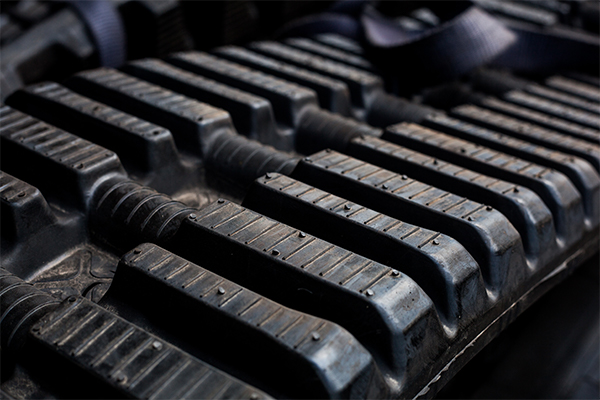WHAT MAKES UP ITR RUBBER TRACKS
RUBBER COMPOUND | FORGED STEEL CLEATS | CORDED WIRE
ITR Rubber Tracks are at the forefront of the global market for quality and performance. ITR uses a rubber compound with a blend of natural and synthetic rubber to ensure the best possible durability, performance, and longevity in Australian conditions.
Our rubber tracks use a continuous wound high tensile steel cable, free of joins, to eliminate cable join failures while minimising the risk of internal corrosion. In addition, we use forged steel cleats, creating a strong and reliable track core.
For more information on the manufacturing of our rubber tracks, check out the link below.
More Info >


HOW TO IDENTIFY YOUR TRACKS
PLEASE ENSURE YOU CHECK THE DIMENSIONS CAREFULLY
A - INNER RAIL mm
B - OUTER RAIL mm
F - RAIL HEIGHT mm
H - PITCH (STEEL PIN CENTRE TO CENTRE) mm
L - NUMBER OF LUGS (STEEL PINS)
W - TRACK WIDTH mm
If you require any additional information, please don't hesitate to contact us.
TAKING CARE OF YOUR TRACKS
OUR TIPS FOR MAINTAINING YOUR UNDERCARRIAGE
• Maintain the correct tension at all times
• Check your undercarriage for wear which may affect the life of your tracks
• Avoid working in rock or demolition sites which may cause damage to your tracks
• Avoid working on oily surfaces, clean tracks immediately if unpreventable
• Minimise sun exposure as much as possible
• Avoid making sharp or fast turns, especially on uneven terrain
For more information, contact your local ITR Branch today on 1300 820 214


ENSURING THEY ARE THE CORRECT FIT
60% OF TRACK FAILURES ARE A RESULT OF AN INCORRECT FIT
Internal Running Roller Offset – The wrong offset results in a rough ride and ultimately cord damage due to oscillation
Rail Height – The wrong height can lead to the weight being carried at the outer flange directly onto the steel geaving and eventually damage the cord cover
Rail Width – The wrong rail width will cause the track to float in excess side clearance to the roller, sprocket and idler centre guide and possibly lead to track dislodgement
See our Installation Guide for more information on how to correctly fit your tracks
COMMON REASONS WHY TRACKS FAIL
Our track experts can be trusted to give an assessment of any premature failures

